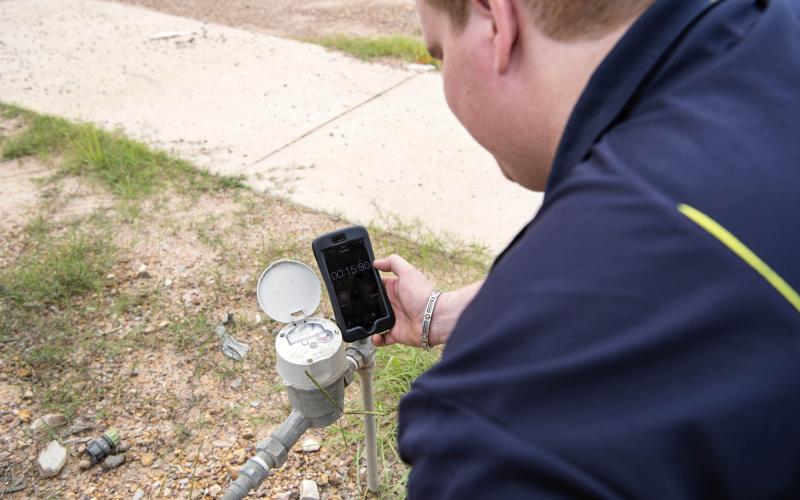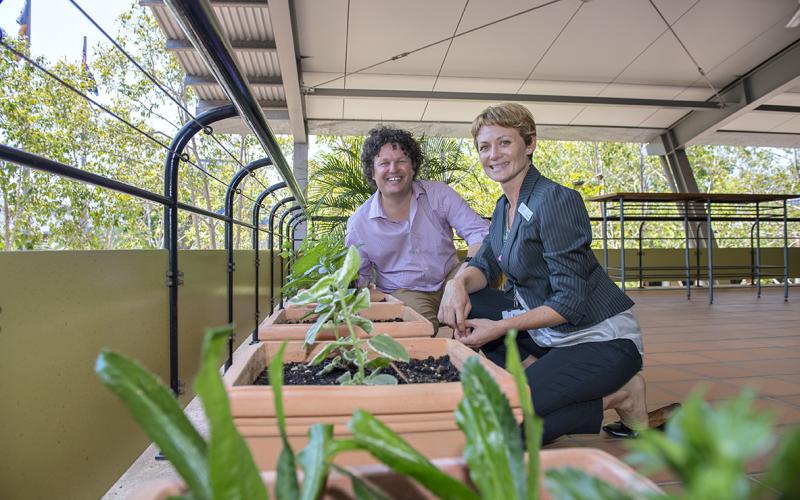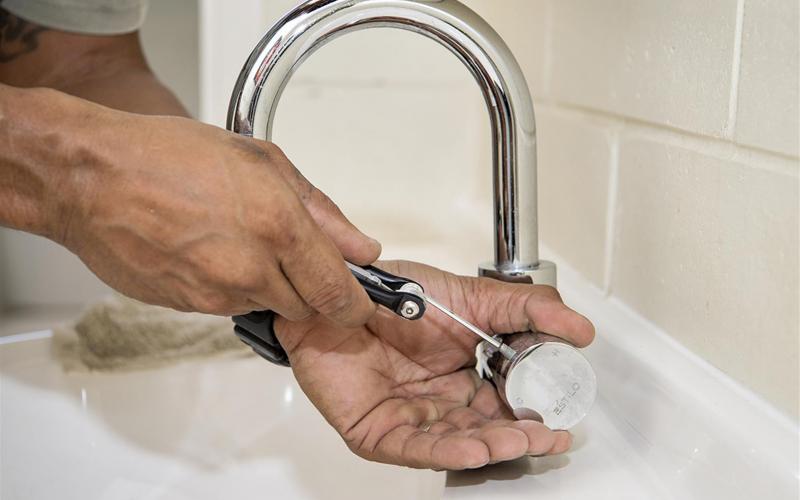10 tips to help you save water in the kitchen at your business
Whether you have a large commercial kitchen or a small tea room, it's worth conserving water. It will save you money and help Darwin save water!
Here are some of our top tips for saving water in the kitchen:
Tip 1: Use water efficient appliances and fixtures - over the long term this can make a big difference to the amount of water and money you use in the kitchen. The Water Efficiency Labelling and Standards (WELS) scheme can help you choose more efficient products, including taps and dishwashers. The more stars the more efficient the product.
Tip 2: Repair leaks right away. Without repairs, water leaks can result in an ocean of wasted water - don't get get caught out, do a simple 3 Step Leak Check regularly and get leaks fixed quickly.
Tip 3: Dishwashers are the highest consumer of water in most kitchens. Make sure yours has a high WELS rating, use the economy setting and only wash fully loaded dishwashers. Filling the racks will make the dishwasher more efficient with the water it is already using. Use the rinse-hold setting on the dishwasher, if it has one, rather than rinsing dishes under the tap.
Tip 4: Don't thaw food under running water. Be organised and put food in the fridge to thaw overnight. This gets the job done just as well, saves water and requires nothing more than a little foresight.
Tip 5: Turn it off. Water or water using equipment are often left flowing or operating when not needed. Saving water can be as simple as turning down a valve or turning off a switch or tap.
Tip 6: Garbage disposal units use about 6 litres of water per day. Put suitable scraps into a composter rather than down the sink.
Tip 7: When washing dishes by hand, don't rinse them under running water. If you have two sinks, fill the second one with rinsing water. If you only have one sink, stack washed dishes in a dish rack and rinse them with a pan of water.
Tip 8: Install a flow controlled aerator on your taps, they are inexpensive and can reduce water flow by 50%.
Tip 9: If you are waiting for hot water to come through, catch the water and use it to water plants, rinse dishes or wash fruit and vegetables.
Tip 10: Make sure your hot water system is not set too high. Adding cold water to cool very hot water is wasteful.
Water Use Health Check
Living Water Smart will pay for an analysis of water use at your place of business and provide recommendations on how to make savings. A Water Use Health Check includes:
- An analysis of your water use in real time, graphed over two-weeks. To do this we attached a data logger to your water meter. You don't need to lift a finger!
- A breakdown of water use by key areas in your business, including irrigation, leaks and general use.
- A quantified weekly cost for each water use area. The result might surprise you! A one-page report with easy actions ti help you save. We'll also let you know if you are eligible for a Garden Tune Up rebate.
Download a Water Use Health Check information sheet.
Education and awareness
- Raising staff awareness is a cost-effective and sustainable way to save water at your business or workplace. Behavioural changes are the cheapest to fix – they’re free! So be sure to focus on these.
- Install reminder signs in your kitchen and bathroom areas to remind staff and customers to use water wisely.
- Display water smart posters in kitchens, staff rooms and toilets.
-
Reduce water wastage by regularly checking and fixing leaks in taps, toilet cisterns, pipes and appliance hoses.
Get management on board
- Having senior managers on board will enable you to investigate, propose and implement water efficiency measures.
- Top Down/Bottom Up Approach - the water saving message should be consistent across the organisation.
- Start water saving practices from the site’s senior management levels.
Get staff on board
- Spread the word – let everyone know about this - get staff involved in the program.
- Talk to staff about your water savings initiatives. Include water savings policies and procedures in staff induction.
- Encourage staff to contribute to water savings ideas. They may already have great ideas about how to save water and this may be their chance to make them happen.
- Discuss water efficiency at team meetings and keep staff up-to-date on how the site is tracking against its goals water use figures.
- Urge employees to report leaks and other issues.
- Provide incentives, for example, you could consider adding water conservation targets to staff performance reviews.
Set a target
- What is your workplace goal? Setting a goal can help to focus attention on what needs to be done and how to achieve it.
- Identify ‘water efficiency champions’ and celebrate their achievements.
For further information and for assistance to improve your organisation’s water efficiency contact Living Water Smart.



